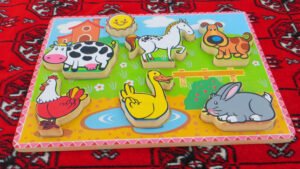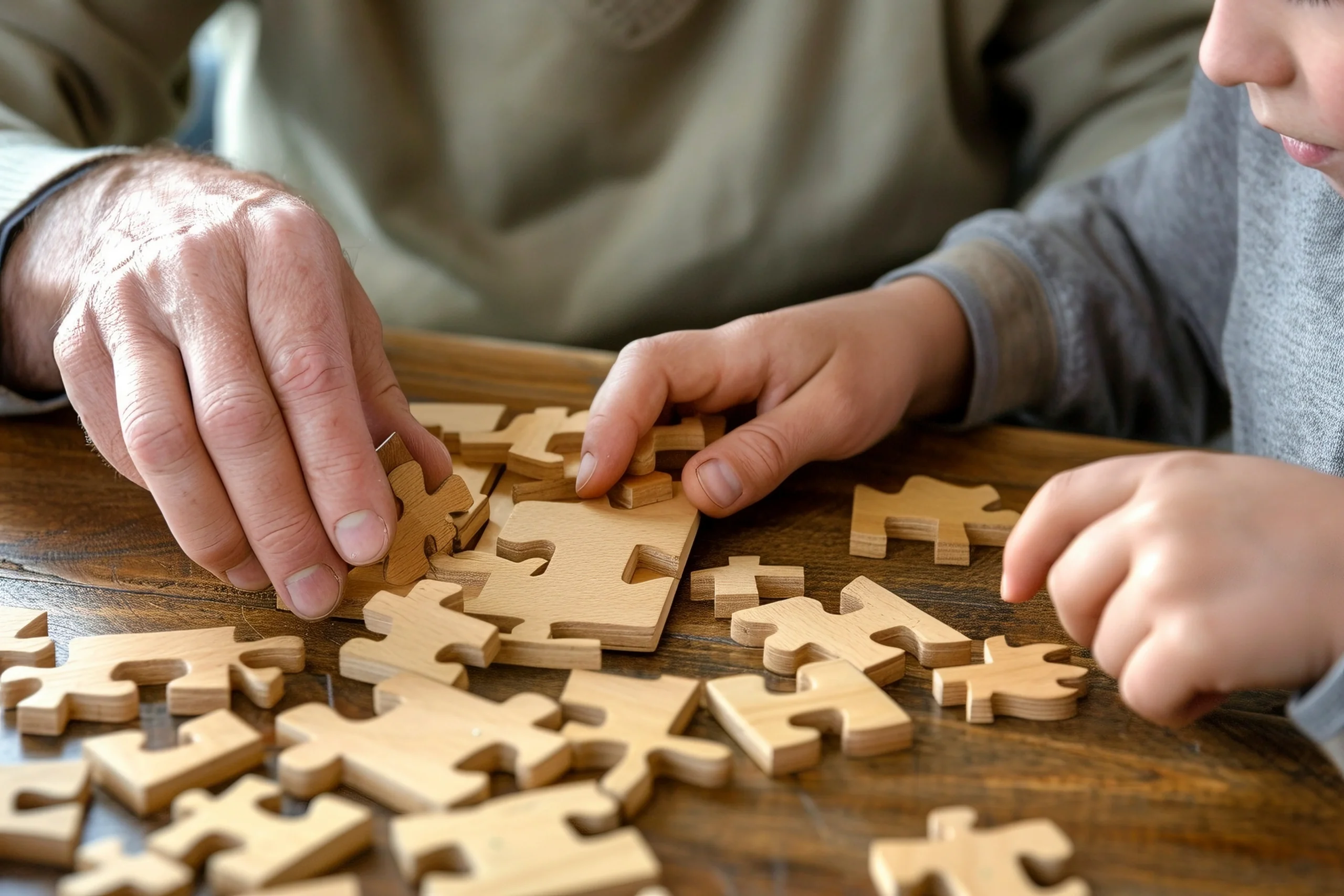Introduction to Puzzles for Children
types of puzzles for children Puzzles have long been regarded as essential tools in childhood development, serving not only as a source of entertainment but also as an effective means of fostering various cognitive abilities. By definition, puzzles are games or problems that require solutions, usually involving the assembly of pieces to form a complete picture or concept. Children interact with puzzles at different stages of their growth, allowing them to gain critical skills and learn valuable lessons about perseverance and spatial awareness.
The importance of puzzles in early childhood education cannot be overstated. They play a vital role in enhancing cognitive skills, such as memory, attention, and logical reasoning. When children engage with puzzles, they are often required to think critically and analytically, allowing them to develop problem-solving techniques that are beneficial throughout their lives. Moreover, as they manipulate pieces, they refine their fine motor skills, which are crucial for tasks such as writing and self-care activities.
Different types of puzzles for children cater to various age groups and developmental stages, ensuring that all children can participate in this enriching activity. For instance, toddlers may benefit from simple wooden shapes or chunky jigsaw puzzles that promote basic cognitive skills and hand-eye coordination. As children grow older, they can tackle more complex puzzles, such as those involving patterns, logic, or thematic imagery. Introducing a variety of puzzle types not only keeps children engaged but also encourages adaptability in their learning processes.
Incorporating puzzle play into everyday activities enriches the child’s learning experience and nurtures a love for exploration. Parents and educators should actively encourage this form of play, recognizing its potential to develop key attributes in children while providing enjoyable and fulfilling challenges.
Classic Puzzle Types
Classic puzzles have stood the test of time, captivating children and encouraging cognitive growth for generations. Among the primary types of puzzles for children are jigsaw puzzles, word puzzles, and number puzzles, each uniquely engaging and beneficial to a child’s development.
Jigsaw puzzles are perhaps the most recognized form of puzzle. They consist of multiple interlocking pieces that must be assembled to create a complete picture. This tactile activity not only enhances a child’s fine motor skills as they manipulate and fit pieces together but also fosters critical thinking and problem-solving as they discern how various pieces connect. Age-appropriate recommendations suggest starting with simple puzzles for toddlers—typically around 10-20 pieces—advancing to more complex designs with varying piece numbers as children mature.
Word puzzles, such as crosswords and word searches, present children with opportunities to enhance their vocabulary and spelling skills. By engaging in these puzzles, children learn to recognize words, understand their meanings, and improve their reading comprehension. Furthermore, the challenge of solving these puzzles nurtures patience and persistence. It is advisable for early readers to begin with simplified word searches, eventually progressing to more intricate crosswords as their language skills develop.
Number puzzles, including Sudoku and math-based challenges, serve not only to boost numeracy but also sharpen logical reasoning skills. These types of puzzles for children encourage them to think critically about numerical relationships and patterns. Starting with basic grid puzzles can be beneficial for younger kids, while older children can tackle more advanced variations, promoting mathematical fluency and problem-solving acumen.
In conclusion, classic puzzles, encompassing jigsaw, word, and number types, provide stimulating opportunities for children to develop essential cognitive skills while simultaneously engaging in enjoyable activities. Parents and caregivers are encouraged to select age-appropriate puzzles to stimulate their children’s learning and ensure a joyful experience in problem-solving.

Modern Puzzle Variations
In recent years, the landscape of puzzles for children has evolved significantly, thanks to technological advancements and creative design thinking. Among the innovative types of puzzles for children, digital puzzles have gained immense popularity. These interactive experiences are frequently available through apps and online platforms, engaging children through vibrant visuals and challenging gameplay. Many puzzle apps incorporate educational themes, making learning an enjoyable experience. For instance, some digital puzzles are designed to enhance critical thinking skills, mathematics, and vocabulary while ensuring a fun and interactive experience.
3D puzzles represent another exciting variation in the types of puzzles for children. Unlike traditional flat puzzles, these three-dimensional models challenge children to consider spatial relationships and build skills in both construction and creativity. 3D puzzles can range from simple structures like animals to complex models such as famous landmarks. By manipulating these pieces, children are motivated to develop patience and persistence, qualities that are imperative in problem-solving scenarios.
Interactive puzzles, which may include physical elements combined with technology, have also emerged as a popular choice among children. These puzzles often require users to engage with both tactile components and digital elements. For example, augmented reality (AR) puzzles use smartphone applications to bring static images to life, resulting in an immersive storytelling experience that captivates young minds. Such puzzles not only promote cognitive development but also encourage collaborative play when enjoyed in groups.
As children continue to explore these modern variations, they benefit from a mixture of traditional problem-solving skills and contemporary engagement strategies. These innovative types of puzzles for children not only foster intellectual growth but also stimulate creativity and collaboration, making puzzle-solving a well-rounded educational activity that complements conventional learning methodologies.
Benefits of Puzzle Play for Children
Puzzles have long been recognized as essential tools for childhood development, offering a myriad of benefits that extend well beyond mere entertainment. One of the most significant advantages of engaging with various types of puzzles for children is the enhancement of fine motor skills. As children manipulate pieces to find the right fit, they develop hand-eye coordination and dexterity, which are crucial for tasks such as writing and using utensils.
In addition to physical skill development, puzzle play significantly contributes to improving critical thinking and cognitive abilities. When faced with different types of puzzles, children learn to analyze patterns, apply logic, and develop problem-solving strategies. This intellectual engagement not only aids in puzzle completion but also fosters a greater ability to tackle challenges in other areas of learning, such as mathematics and science.
types of puzzles for children Puzzles also teach patience and perseverance, as children often encounter difficulty when trying to piece together complex designs or images. Successfully completing a puzzle requires sustained focus and determination, qualities that are essential for long-term academic success and personal growth. This sense of achievement and the gradual buildup of confidence as children progress through puzzles contributes positively to their self-esteem.
Moreover, the social aspect of puzzle play is invaluable. When children engage in cooperative play, they learn to share ideas, listen to others, and work collaboratively to achieve a common goal. This interaction not only strengthens their social skills but also fosters a sense of community as they celebrate collective accomplishments. Numerous types of puzzles for children, such as jigsaw puzzles, mazes, and even digital apps, cater to diverse learning styles. Thus, they provide inclusive opportunities for all children to benefit from puzzle-related play, enriching their developmental experience in a fun and engaging manner.


















